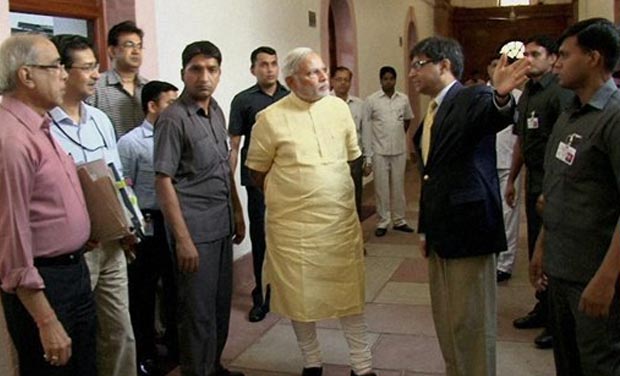Since taking administrative power after the massive electoral victory in 2014, innovation and reforms in Indian bureaucracy has been one of the top agendas for the Narendra Modi government. The government, more so in its second term with a fresh and even stronger mandate, has evidently been successful in kick starting the wheel of reforms in these central services which for long have been marred under allegations of corruption and inefficiencies.
However, amid the ongoing reforms and crackdown on corruption, the associations meant to represent the IAS, IPS, IRS officers have fallen silent, ThePrint reported. These associations are usually meant to be the platforms for voicing concerns, grievances, support officers in need and facilitate dialogue in the country, but they have maintained complete silence under the Modi government.
In fact, earlier this year, IAS officers, G. Kannan and Sasikanth Senthil resigned from the service publicly criticising the Modi government for its actions in Jammu and Kashmir. However, the IAS Association did not comment on the issue.
The IAS, IPS, IFS and associations of their services have also largely been inactive barring their limited online presence. The IAS Association has not had a president for more than half a year; the IRS Association has not had an election in two years, and the story is more or less similar across services.
The government has also been proactive in cracking down on corrupt officials, around a hundred officers have been asked to retire citing irregularities in their conduct ranging from charges of corruption, collecting and giving bribes, smuggling and even criminal conspiracy, under the Rule 56(J) of Central Civil Services (Pension) Rules, 1972 which provides for periodical review of the performance of government servants with a view to ascertain whether they should be retained in service or retired in public interest. Several of the officers retired had also been accused of misusing their powers and harassing honest taxpayers, either by targeting honest assesses or taking excessive action for minor or procedural violations. This has effectively broken the backbone of the bureaucratic ‘cartels’. These ‘cartels’ were nothing but a hindrance to the development of the country, working against national interests.
One of the major pushes by the government in this regard has been its lateral entry scheme, under which a number of domain experts from the private field are being fetched to work for the government not only giving a fresh perspective to bureaucratic positions but also opening up opportunities for many eligible and competent citizens to take on the public services route.
Modi government in its second term is also poised to expand the policy of lateral entry that would facilitate recruitment of at least 40% of officers at the joint secretary level from outside the system. The Modi government has been a firm proponent of bringing in domain experts in critical positions which call for niche knowledge and experience. The government’s plan to synergize existing talent pool with fresh minds from outside is sure to help deliver better results on several fronts.
Moving forward, the Modi government had recently appointed nine non-governmental professionals as joint secretaries in various government departments. UPSC had released the list of professionals who joined various government departments. These departments are agriculture, cooperation and farmers welfare, civil aviation, commerce, economic affairs, environment, forest and climate change, new and renewable energy, road transport and highways, and shipping. However, this time around a fresh batch of around 55 officers will be selected through NITI Aayog, instead of UPSC. According to sources, the government is planning to put out advertisements for about 50 positions in NITI Aayog for different positions including directors, joint secretaries, additional secretaries, etc.
PM Modi’s plan to revive the Indian bureaucracy is sure a positive step ahead to churn the old system which is considered inefficient and corrupt by many. It is to note that the tussle between the political executive and the bureaucracy has largely stayed under the table , nonetheless several developments sure point towards the efforts of the current administration to further improve these prestigious services.
